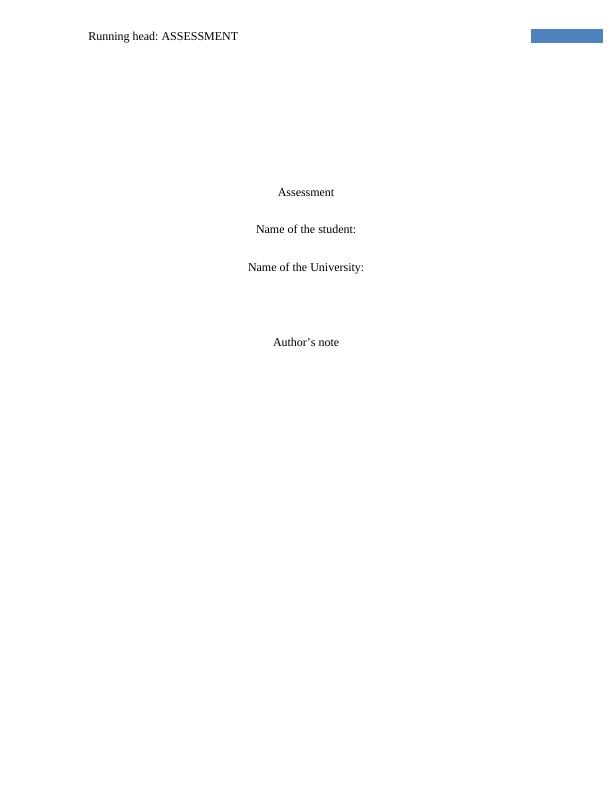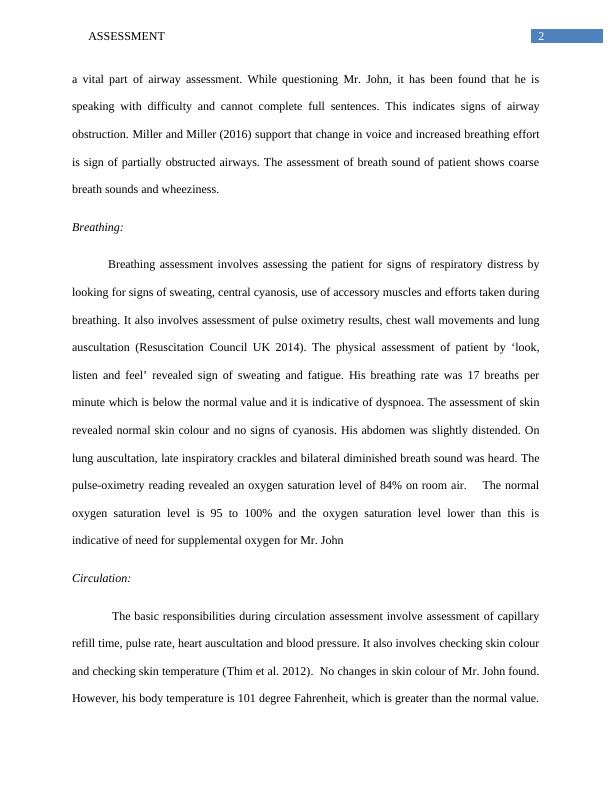Assessment of a Patient with Breathing Difficulty and Chest Pain
9 Pages1883 Words31 Views
Added on 2023-01-23
About This Document
This assessment focuses on a patient with breathing difficulty, chest pain, and other symptoms. It includes a detailed examination of the patient's vital signs, airway, breathing, circulation, disability, exposure, ABG analysis, chest x-ray result, and nursing goals and interventions. The assessment concludes with an evaluation of the implemented interventions.
Assessment of a Patient with Breathing Difficulty and Chest Pain
Added on 2023-01-23
ShareRelated Documents
End of preview
Want to access all the pages? Upload your documents or become a member.
Community Acquired Pneumonia: Pathophysiology, Assessment, and Management
|14
|3153
|276
Evidence based Nursing Research
|9
|2848
|98
Respiratory Management and Cardiogenic Shock
|9
|2730
|326
Clinical Assessment of a Child with Pneumonia
|5
|1714
|280
Acute Respiratory Failure: Causes, Symptoms, and Diagnosis
|11
|3227
|163
Acute Severe Asthma: Pathogenesis, Diagnosis, and Treatment
|7
|1783
|475



